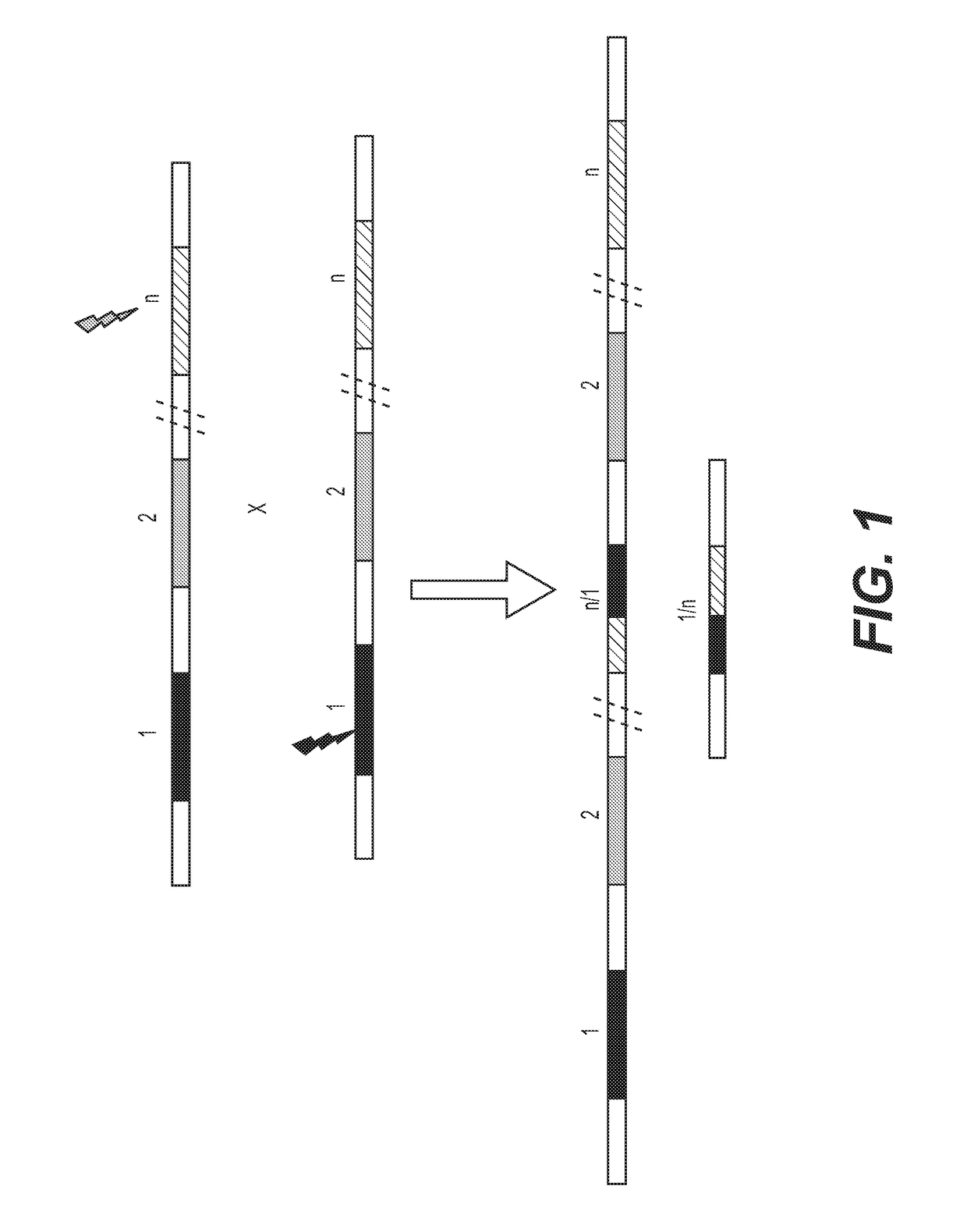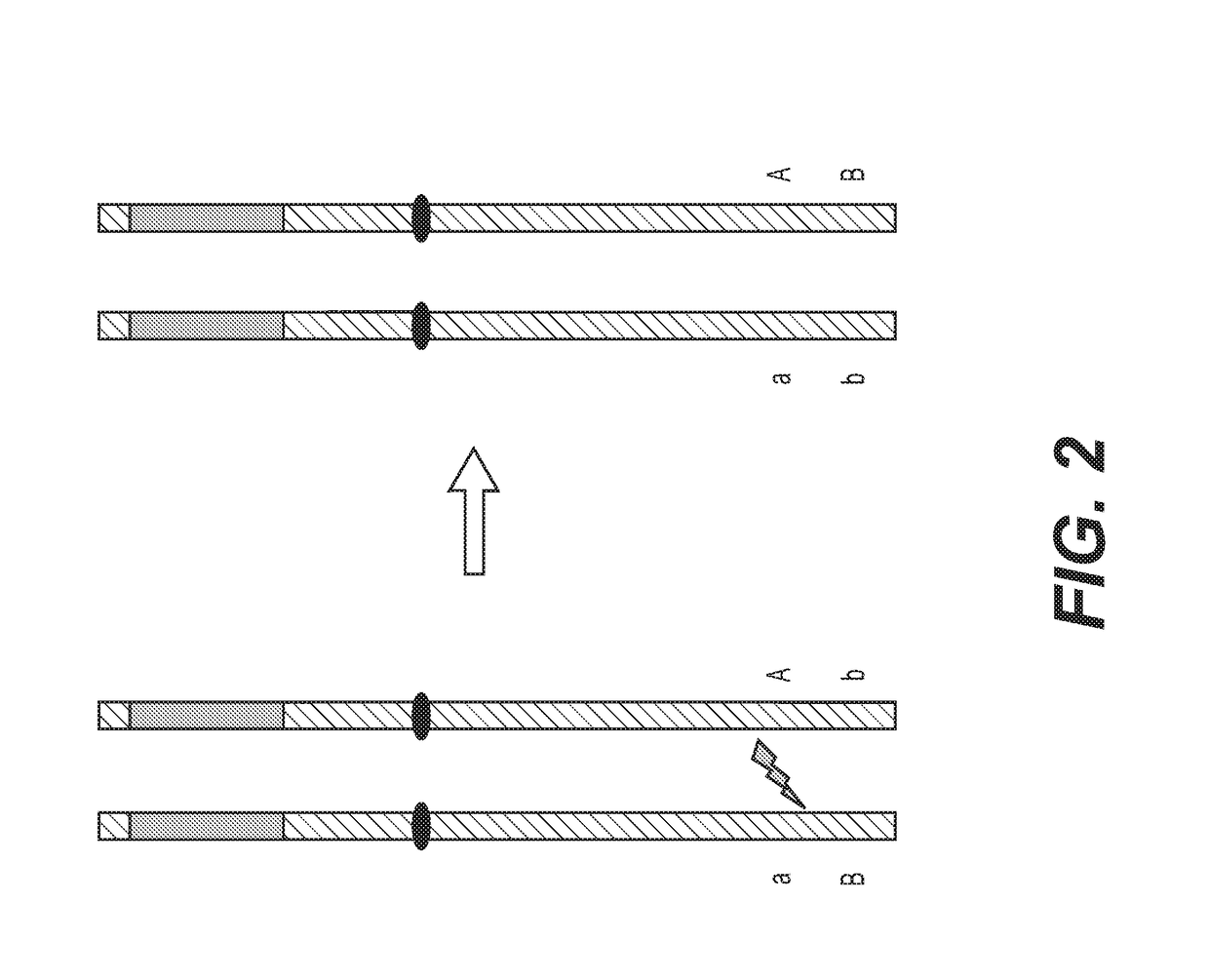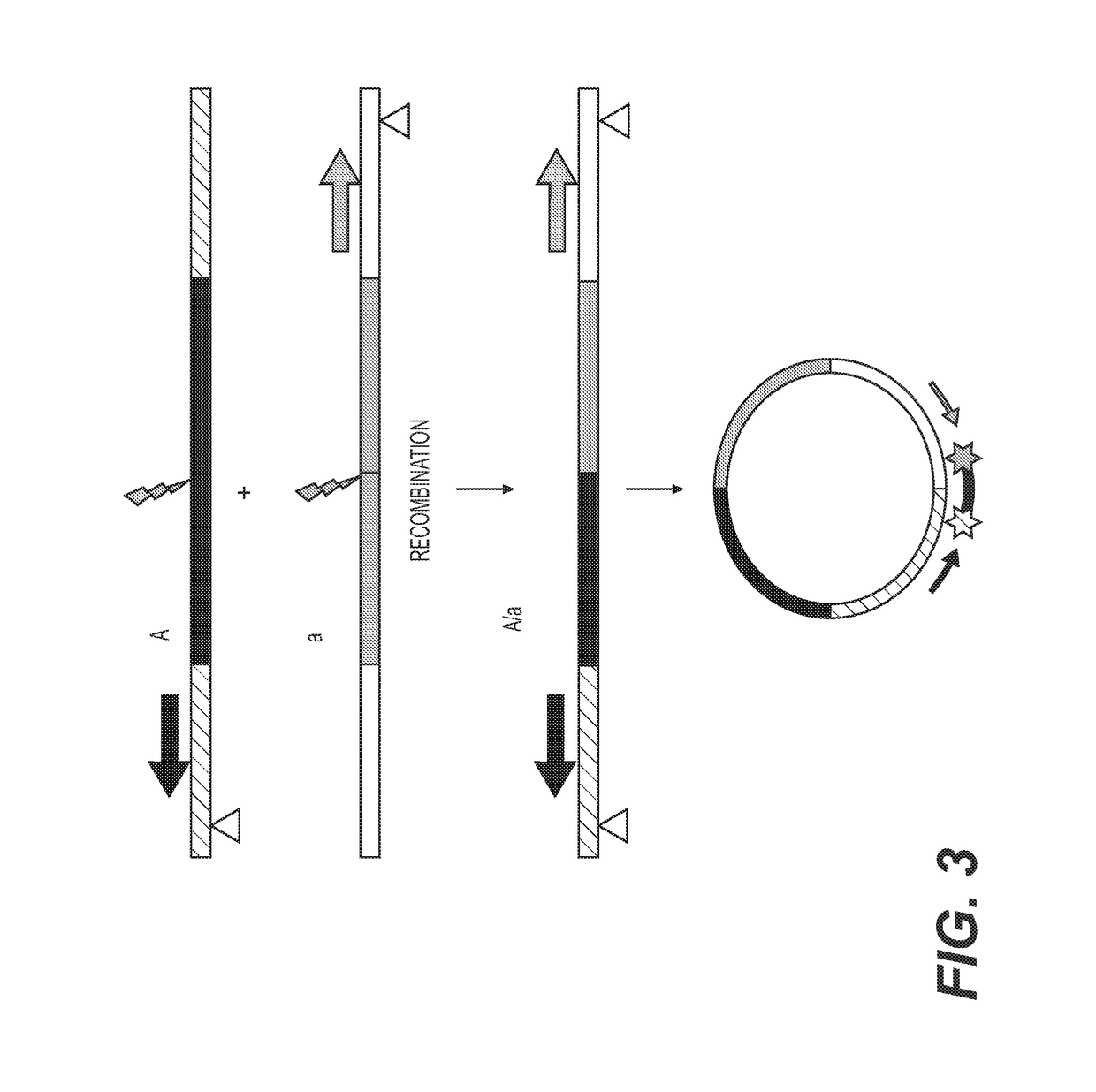Enhanced recombination of genomic loci
a recombination and genomic technology, applied in the field of enhanced recombination of genomic loci, can solve the problems of slow and costly process, and the inability of standard breeding techniques to overcome certain genetic linkages, and achieve the effects of reducing the number of rpp1 genes, reducing the number of rps1 genes, and increasing the number of rhg1 genes
- Summary
- Abstract
- Description
- Claims
- Application Information
AI Technical Summary
Benefits of technology
Problems solved by technology
Method used
Image
Examples
example 1
rand Break Target Site Selection
[0162]To accelerate recombination in a selected genomic locus, comprehensive sequence analysis is done across a selected genomic locus in one or more selected germplasm lines to identify polymorphisms among both the genic and intergenic regions of the selected genomic locus. The sequencing is done by methods known to one skilled in the art. Non-limiting examples of sequencing methods include BAC clone sequencing, deep sequencing, “shot-gun” sequencing, random sequencing, direct sequencing, next-generation sequencing methods, etc. Bioinformatic tools are then used to identify specific target sequences for site-specific genome modification enzymes, such as a meganuclease, a zinc-finger nuclease, a zinc finger recombinase, an Argonaute, a TALEN, a TALER, an RNA-guided nuclease or CRISPR associated protein.
[0163]The target sequences are selected, in part, based on the sequence of the surrounding genomic region, such that the genomic regions surrounding th...
example 2
t Assay
[0165]A protoplast assay is used as a rapid assay for testing nuclease induced recombination within the selected genomic locus. Protoplasts are prepared from leaf mesophyll cells from the selected germplasm of corn plants identified as described in Example 1 and are heterozygous at the selected genomic locus. Similarly, protoplasts are prepared from cotyledon of soy plants from the selected germplasm identified as described in Example 1 and are heterozygous at the selected genomic locus. For the protoplast assay, individual plants which have polymorphism on the flanking sides of the selected genomic locus are chosen to facilitate screening by one or more PCR assay configurations.
[0166]Site-specific genome modification enzymes chosen and / or designed for the specific target sequences(s) identified as described in Example 1 are cloned into expression cassettes with plant-specific expression elements. Expression elements include enhancers, promoters, introns, 5′-untranslated lead...
example 3
t Assay to Detect Recombination in Soybean Rps1 Locus
[0171]Cotyledon protoplasts of the soy germplasm A3555 were co-transformed with a vector containing an expression cassette for a soy codon-optimized Cas9 (SEQ ID NO:77) and one or two single guide RNA (sgRNA) constructs driven by a soy U6i (SEQ ID NO:80) or U6c (SEQ ID NO:81) promoter. The sgRNA were designed to one of the 6 identified Rps1 target sequences (TS) represented by SEQ ID NO:21 through SEQ ID NO:32. For each of the six Rps1 target sequences, there were two variants differing by 1 nucleotide (see Table 4). A Renilla luciferase construct was used as a transformation control. Following a two-day incubation period, total genomic DNA was isolated from the transformed protoplasts. Recombinant Rps1 paralogs were identified using a PCR assay as described in Example 1 that utilizes sequence length-polymorphism among individual Rps1 paralogs. While Rps1 paralogs are fairly conserved, there is significant length polymorphism amon...
PUM
| Property | Measurement | Unit |
|---|---|---|
| Fraction | aaaaa | aaaaa |
| Fraction | aaaaa | aaaaa |
| Fraction | aaaaa | aaaaa |
Abstract
Description
Claims
Application Information
 Login to View More
Login to View More - R&D
- Intellectual Property
- Life Sciences
- Materials
- Tech Scout
- Unparalleled Data Quality
- Higher Quality Content
- 60% Fewer Hallucinations
Browse by: Latest US Patents, China's latest patents, Technical Efficacy Thesaurus, Application Domain, Technology Topic, Popular Technical Reports.
© 2025 PatSnap. All rights reserved.Legal|Privacy policy|Modern Slavery Act Transparency Statement|Sitemap|About US| Contact US: help@patsnap.com



